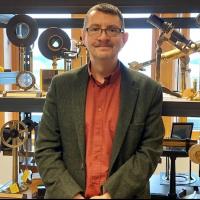The tools and methods of machine learning are driving a revolution in the understanding of complex dynamics, with rapidly growing interest in the fields of laser physics and ultrafast photonics. From a fundamental perspective, an area of particular promise is the use of data-driven discovery to study nonlinear systems from the point of view of developing new approaches to understand and model physical systems. We have been working in this area recently with some exciting results in the study of nonlinear fibre optics, focussing on the use of inverse methods (sparse regression) to determine models from data (link to paper here) and the use of multidimensional cluster analysis to algorithmically identify contributing linear and nonlinear interactions during field evolution (link to paper here).
Recent years have seen the rapid growth and development of the field of smart photonics, where machine-learning algorithms are being matched to optical systems to add new functionalities and to enhance performance. An area where machine learning shows particular potential to accelerate technology is the field of ultrafast photonics — the generation and characterization of light pulses, the study of light–matter interactions on short timescales, and high-speed optical measurements. I recently contributed to a review paper on the topic in Nature Photonics. There is also an open access repository version.
I recently wrote a News and Views paper for Light: Science & Applications describing how femtosecond pulses from an ultrafast mode-locked fiber laser can be optimized in real time by combining single-shot spectral measurements with smart machine learning algorithms to actively control and drive the intracavity dynamics. You can access this here.

